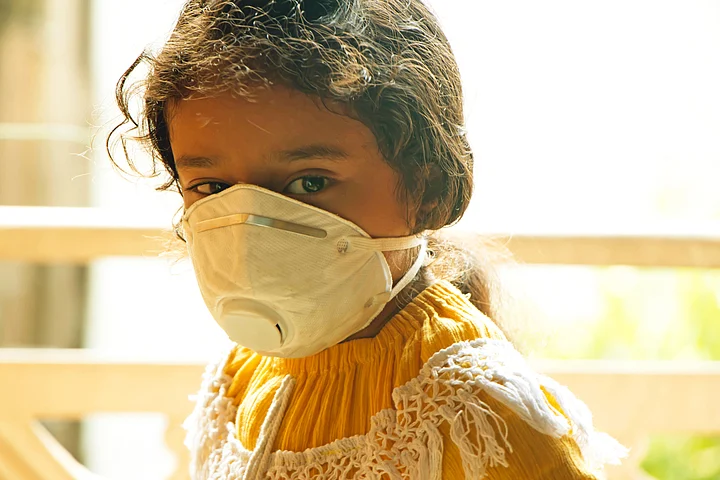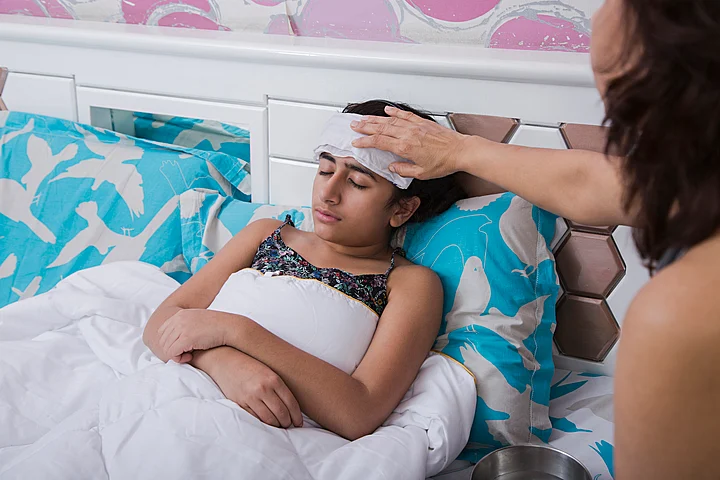One of the only reassuring aspects of COVID-19 has been that, so far, it has been rare for children to get infected and if they do, recovery is fairly easy.
Some reports from Mumbai and Delhi hospitals are showing that children who have recovered from COVID-19, and some who have tested negative for the virus, are showing some symptoms of a rare inflammatory illness called Kawasaki Disease (KD). The World Health Organisation is calling it Multisystem Inflammatory Disorder.
What is the link between COVID-19 and these symptoms? Why is this happening only in children? And just how serious is this?
FIT speaks to Dr Dhiren Gupta, a senior paediatrician at Gangaram Hospital, New Delhi who explains,
“This is indirectly related to the coronavirus. What happens is that there is an inflammation that is happening to past COVID-19 infections which has probably happened 2-4 weeks ago. Now, it is an abnormal reaction of the body - we can call it an immune disregulation, where the immunity has gone haywire.”Dr Dhiren Gupta, pediatrician at Gangaram Hospital
In Mumbai’s Bai Jerbai Wadia hospital, out of 100 children treated for COVID-19, 18 have been diagnosed with paediatric multisystem inflammatory syndrome (PMIS), and one has died, reported Mumbai Mirror.
In Delhi’s Kalawati Saran Children's Hospital, doctors said there were five to six cases in which children treated for COVID had symptoms like those of the Kawasaki disease reported The New Indian Express.

Why Are Children Getting Affected?
Dr Gupta says that while young people and children have a lower chance of contracting the disease, these severe inflammatory symptoms are being seen when they recover.
“So far, paediatric patients had a 54 per cent less chance of getting infected with COVID-19, and out of these only 1 per cent were becoming critical, especially among less than one-year-olds.”
But in some children, they start to develop inflammation around 2-4 weeks after they recover. “In fact, around 90 per cent of the paediatric patients who are showing these symptoms are testing COVID-19 negative (in the RT-PCR tests),” adds Dr Gupta.
Like with the cytokine storm reaction in adults, this severe inflammatory response is due to the immune system going “haywire.” It is a hyper-immune response.
“ The body reacts to the COVID-19 virus in the form of creating antibodies and T cells, but now while COVID-19 has gone (in most patients), the body is reacting abnormally to those proteins which were formed to eliminate COVID-19.”Dr Dhiren Gupta, Paediatrician at Gangaram Hospital
What are the type of presentations this internal disregulation leads to? Here is where we talk about the infamous Kawasaki disease.
There are 3 main types of presentations:
- Prolonged fever
- Kawasaki-like syndrome (red eyes, rashes, strawberry tongue)
- Classical hyper-inflammatory syndrome which is MISC (Multisystem inflammatory syndrome)
“All of these are hyper-inflammatory syndromes,” says Dr Gupta, “It is a spectrum.”
He explains that while this can mimic Kawasaki Disease (KD), there are differences between classical KD and what is being observed in children. “Therefore, we say this is Kawasaki-like syndrome as it is KD secondary to hyper-inflammation.”
“These can be devastating in terms of causing low blood pressure that is happening in 80 per cent of the paediatric patients. 80 per cent of the patients who land up with hyper-inflammation land up in the ICU.”Dr Dhiren Gupta, pediatrician at Gangaram Hospital
Why is this only happening to patients below 19 years? “No one knows, but it is following the same patterns as was seen in other parts of the world. Wherever the peak has happened, this occurs around 2-4 weeks after.”
The US’ Centers for Disease Control and Prevention (CDC) said that MISC was first identified in paediatric patients in the US and UK in April 2020.
FIT reported on this emerging phenomenon on 15 May, when the condition called paediatric multisystem inflammatory syndrome, was increasingly found in children in the US in New York, California and Louisiana and in Europe in Italy, France and Switzerland. At the time, there was speculation that it could be linked to COVID-19 as incidences of this rare but deadly illness were increasing.
“This is a hyper-inflammatory syndrome which can be mild only in a few cases but it is severe either in the form of Kawasaki disease with low-blood pressure, or MISC which is a classical and devastating disease. This is secondary to COVID-19, which means it occurs post a COVID-19 infection.”Dr Dhiren Gupta, pediatrician at Gangaram Hospital
He reiterates that this Kawasaki-like disease (which is secondary to hyper-inflammation from COVID-19) is presenting with low-blood pressure making it more severe. “This occurs mainly in children above 5 years old, as compared to classical KD which is present in children mostly less than 5 years old. But no one is 100 per cent sure that Kawasaki-like syndrome cannot come in 2 or 3-year-olds also.”
The disease is most prevalent in around 8-year-old children as per Dr Gupta’s experience. “But my observation is that the older the child is, the more severe the disease is.”
While the first symptom of prolonged fever occurs only in a few cases, Kawasaki-like disease is occurring in 30-40 per cent of the patients,
Furthermore, MISC is present more in obese children. “Asthma and obesity in children are two predisposing factors.”
“MISC, the most devastating one, and Kawasaki-like disease, are the most worrisome. They are serious issues and need urgent treatment.”Dr Dhiren Gupta, pediatrician at Gangaram Hospital
They need hospitalisation and urgent multi-disciplinary ICU care.
Most of these children have 75-80 per cent of COVID-19 antibodies, adds Dr Gupta. “But even if the child does not have antibodies, but had COVID-19 and is showing the symptoms, this disease should be considered.”
“In 90 per cent of these cases, they are COVID-19 negative and therefore not infectious,” says Dr Gupta. “Some 10 per cent of patients have COVID-19 still and these diseases.”

Managing the Disease in Children
How to predict this disease early on? The WHO has laid out some guidelines that doctors concur with based on clinical experience:
- Fever more than 101 degree Fahrenheit for more than three days
- Rashes
- Conjunctivitis
- Inflammation signs (Oral, hand or feet)
- Hypertension or shock
- Evidence of coagulopathy
- Diarrhoea, vomiting, abdominal pain
Dr Dhiren says that, “Three female patients from Gangaram Hospital, all above 5 years old had a 105 degree fever and developed shock after 48 to 72 hours after onset of symptoms.”
He says there's no reason to panic, but parents should keep an eye on their kids, not neglect fever, and rush to a hospital if children present above symptoms.
(At The Quint, we are answerable only to our audience. Play an active role in shaping our journalism by becoming a member. Because the truth is worth it.)
